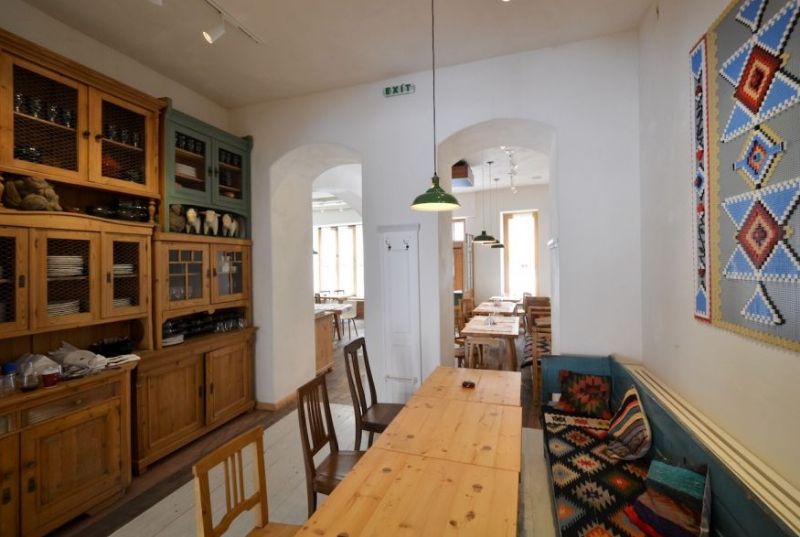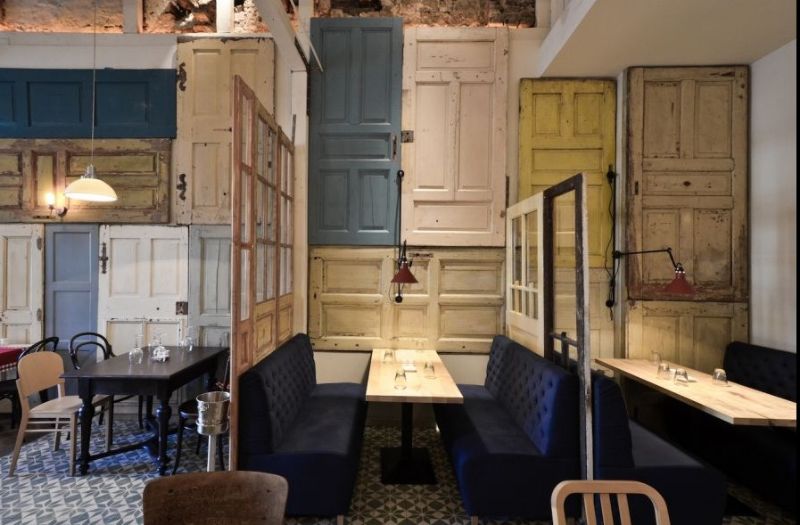Interview with Romanian architect Cristian Corvin: The whole fun is to add value by putting old items in the right context

Cristian Corvin is a Romanian architect whose name has become increasingly known in his home country and abroad, after having designed and re-designed, among others, several restaurants, such as Lacrimi si Sfinti, Bon, Atelier Mecanic, and more recently, Red Angus Steak House. For Lacrimi si Sfinti, a design for which Corvin got the award at the 2012 Bucharest Annual, most of the furniture is old authentic Romanian gathered in various regions of Romania, from Oltenia to Transylvania. Romania-Insider.com talked to Cristian Corvin about his design style, the objects he includes in his designs and about how he feels about the Old Town, where many of the restaurants he worked on are located.
In some of the places you designed, items are of rural inspiration – the Lacrimi si Sfinti restaurant is a proof of that. How do you find these objects, what are your sources for the traditional items you need, and how easy is it to find them (not only for you, but in general for those interested in such objects)?
There is no recipe in finding these objects. Like anyone else would do, I or the client begin asking around and eventually someone knows someone who knows someone. I get this type of questions quite often: How do I find an old door? I don't have a clue, maybe near a demolition site or just ask around. I do pay attention though, and if I see something interesting, I keep it in mind.
If you were to promote one thing Romanian abroad (or even at home), what would that be, and why?
Humor. I think it's one of Romanians' less known and special qualities.
What was the most expensive old item and what was the cheapest old item you used in your design work? Please mention the short story behind them.
I try to avoid expensive items. Actually, I can't remember of an expensive item I ever used. The whole fun is to add value by putting them in the right context. Of course, the whole process of sourcing, repairing, cleaning, transport and so on gets quite expensive, but not the object itself. I have some stories about chairs I got from the Jewish cemetery where they used to have a warehouse to keep furniture from those who didn't need it anymore... or I have some ceramic stoves that an old gentleman, Mr. Grigore, dismantled and rebuilt in another house very carefully. They weren't extremely valuable but the way he put them together is a work of art. I did steal some socialist posters and signs from half abandoned factories and so on. Also some door handles from a beautiful Art Deco building on Calea Victoriei that was demolished soon after.
 Photo: Lacrimi si Sfinti restaurant
Photo: Lacrimi si Sfinti restaurantWhat is your favorite area of Romania in terms of architecture and why?
I think Bucovina. It has a specific purity, cleanliness and refinement.
What do you think the places you design (restaurants, cafes, offices) bring to the overall feel of Bucharest?
I hope some kind of authenticity.
What do you think about Bucharest's Old Town and its recent transformation? What do you like about it, and what you don't like about it?
I think the Old Town's new life as a social hub has been hijacked into the lowest form of entertainment. It looks busy and joyful at a first glance but behind the glitzy neon signs the process is quite sad. Bad taste sells good on the short term, especially nowadays in Romania. Of course, it will always be busy and there will always be a public for it but not the way it was shaping less than three years ago: antique shops near cosmopolitan restaurants, popular bars near alternative venues, a healthy mix. Now it's mostly very bad music at the highest level to cover the even worse music from the competition. There are exceptions, of course. For a foreigner, it's definitely worth a visit and the chaos is charming for a little while.
Photo: Bon restaurant
 How much of your work happens abroad these days, and what sort of projects do you have abroad? What is The Leisure Way project, in short, and what is your aim via your involvement there?
How much of your work happens abroad these days, and what sort of projects do you have abroad? What is The Leisure Way project, in short, and what is your aim via your involvement there?
Maybe a third. The Leisure Way is an international team whose main scope is to transform shopping centers that were traditionally focused only on retail into community meeting places through enhancing the leisure and social component. It is beneficial both for the community and for the malls whose traffic is decreasing with the current trends in consumer behavior. Design is an important part of this process and we aim at developing expertise into this area.
How would you describe your design style? And what keeps you on this design path, why do you do what you do, what is your motivation behind all these projects?
Sophisticated rudimentary. As for the motivation, Saul Bass said: "I want to make beautiful things, even if nobody cares."
Interview by Corina Chirileasa, corina@romania-insider.com
(photos courtesy of Cristian Corvin)















